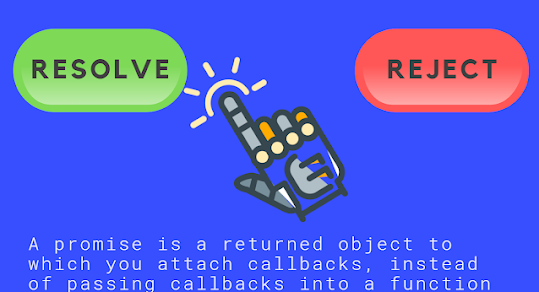Asynchronous programming
Single Threaded
So basically script is a single thread language which means it runs one line at a time it is not multitasker.so When it receives the code that is going to take time it runs the other code and comes back to that code when it is done but it cannot do that alone so it takes the help of browser to complete this task browser(made up of c++) contain
Synchronous & Asynchronous
synchronous programming में एक TIME में एक ही चीज को LINE TO LINE चलाताहै । जब हम किसी function को कॉल करते हैं जो लंबे समय तक चलने वाली क्रिया करता है, तो कार्रवाई समाप्त होने पर यह परिणाम देता है। यह कार्रवाई के समय के लिए प्रोग्राम को रोक देता है। इसके विपरीत, एसिंक्रोनस प्रोग्रामिंग एक ही समय में कई चीजें होने देती है। जब हम कोई क्रिया शुरू करते हैं, तो प्रोग्राम चलता रहता है। जब कार्रवाई समाप्त हो जाती है, तो कार्यक्रम को सूचित किया जाता है और परिणाम प्राप्त होता है।
आइए एक उदाहरण का उपयोग करके सिंक्रोनस और एसिंक्रोनस प्रोग्रामिंग की तुलना करें:
एक प्रोग्राम जो नेटवर्क से दो संसाधन प्राप्त करता है और फिर परिणामों को जोड़ता है। सिंक्रोनस प्रोग्रामिंग में, जहां रिक्वेस्ट फंक्शन अपना काम करने के बाद ही वापस आता है। इस कार्य को करने के लिए, हम एक के बाद एक अनुरोध करते हैं। यहां कमी यह है कि दूसरा अनुरोध तभी शुरू किया जाएगा जब पहला समाप्त हो गया हो। मान लीजिए कि पहले अनुरोध द्वारा लिया गया समय 12 सेकंड है, और दूसरे अनुरोध द्वारा लिया गया समय 13 सेकंड है, इसलिए लिया गया कुल समय दो प्रतिक्रिया समयों का योग होगा।
एसिंक्रोनस प्रोग्रामिंग में, धीमी क्रिया करने वाले फ़ंक्शन एक अतिरिक्त तर्क, एक कॉलबैक फ़ंक्शन लेते हैं। कार्रवाई शुरू हो गई है, और जब यह समाप्त हो जाती है, तो कॉलबैक फ़ंक्शन को परिणाम के साथ बुलाया जाता है।
<script>
यह synchronous program इस प्रोग्राम में पहेले console.log("this is index"+ index)
1000 बार प्रिंट होगा उसके बाद में done print होगा यह synchronous के कारण होता है
अगर इसी asynchronous में देखते ह
इस में एक setTimeout function लगा देते है जो इसे asynchronous program में बदल देता है
जिस से की जावा स्क्रिप पहले don print को प्रिंट करेगा फिर console.log("this is index"+ index)
रन करेगा यह सब AS के कारण होता हे जब JS setTimeout function को देखता है तो वहा इसे छोड़ देता है
और आगे का कोड रन करता है तब Browser JS की हेल्प करता ह और जब setTimeout function
खत्म हो जाता है तो JS को बता देता है
Call stack -
यह एक नार्मल कॉल है जो की js को बताता ह की यह Normal फंक्शन है या as फंक्शन हैं
-यह last in first out पर वर्क करता है
-जब स्क्रिप्ट किसी भी फ़ंक्शन को कॉल करती है जो पिछले फ़ंक्शन को स्टैक करने के अलावा अन्य फ़ंक्शन को कॉल करती है जब तक कि अंतिम फ़ंक्शन तक नहीं पहुंच जाता है जो मूल्य लौटाता है और बाहर जाता है स्टैक से कुछ हद तक लास्टिन फर्स्ट आउट की तरह
Call back
कॉलबैक एक फ़ंक्शन है जिसे किसी अन्य फ़ंक्शन के argument के रूप में पारित किया जाता है यह technique एक फ़ंक्शन को दूसरे फ़ंक्शन को कॉल करने की अनुमति देती है किसी अन्य फ़ंक्शन के समाप्त होने के बाद कॉलबैक फ़ंक्शन चल सकता है
A callback the function is a function that is passed to another function as an argument and is executed after some operation has been completed. Below is an example of a simple callback function that logs to the console after some operations have been completed.
function modifyArray(arr, callback) {// do something to arr herearr.push(100);// then execute the callback function that was passedcallback();}var arr = [1, 2, 3, 4, 5];modifyArray(arr, function() {console.log("array has been modified", arr);});
Call back hell
इसके अंदर बहुत सारी कॉल बेक होती है
Promise
यह एक object होता है जिस में दो method या argument होते हे resolve or reject,अगर हमारी condition true होती तो resolve work krta hai or अगर else होती है तो reject वर्क करता है
इनकी value देखने के लिए .that or .chach का प्रयोग करते है
Async await
यह Makeup of promise होता है
अगर हम नोर्मल function के आगे async लगा देते हैं तो वह return में एक promise को return करता है
यह promise एक resolve promise होता है
await
अगर किसी फंक्शन की अंदर await लगा दिया जाये तो async function use बिना चेक किये ही आगे बढ़
जाता हा और बाद म आकर चेक करता है
API: Application Programming Interface
API stands for application program interface. A programmer writing an application program can make a request to the Operating System using API (using graphical user interface or command interface). It is a set of routines, protocols and tools for building software and applications.
AJAX :-
JSON एक text-based data interchange format होता है जिसे की design ही किया गया होता है structured data की transmitting करने के लिए.
JSON का Full Form होता है “JavaScript Object Notation” और इसे pronounce किया जाता है “Jason.” इसे सबसे ज्यादा इस्तमाल किया जाता है data को transfer करने के लिए web application और web services के बीच में.
JSON को अक्सर देखा जाता है एक alternative के तोर में XML का, एक दुसरे plain text data interchange format के तोर पर. ज्यादातर cases में, JSON representation एक Object का ज्यादा compact होता है उसके XML representation की तुलना में क्यूंकि इसमें कोई भी tags की जरुरत नहीं होती है प्रत्येक element के लिए.
JSON
{ "computer": { "name": "Working PC", "components": { "CPU": "Intel i5 2.4GHz", "ram": "8GB", "storage": "1TB HDD" } } }
XML
<computer> <name>Working PC</name> <components> <CPU>Intel i5 2.4GHz</CPU> <ram>8GB</ram> <storage>1TB HDD</storage> </components> </computer>
JavaScript has a built in function for converting JSON strings into JavaScript objects:
इस फंक्शन से डाटा को object FORMAT में CONVERT कर सकते है
JSON.parse()JavaScript also has a built in function for converting an object into a JSON string:
इस function से data String की format में convert कर सकते है
JSON.stringify()
<script>const data = '{"categories":["explicit"],"created_at":"2020-01-05 13:42:18.823766","value":"The Chuck Norris facts game is played out"}'let obj = JSON.parse(data)console.log("josn object")// let obj=JSON.stringify(data)// console.log("josn object")</script>
Proto type:-
- prototype object का template होता है जिसमे की उस object के सभी method होते है,जेसा की नीचे दिखाया गया है एक car नाम का object है जिसमे उसके सभी method है
- इसमें हम नये में method बना भी सकते है जेसे की दिखाया गया है
- इसमें हम method को overlap भी कर सकते है
Introduction to JavaScript constructor functions
learned how to use the object literal syntax to create a new object.
For example, the following creates a new person object with two properties firstName and lastName:
let person = {
firstName: 'John',
lastName: 'Doe'
};Code language: JavaScript (javascript)In practice, you often need to create many similar objects like the person object.
To do that, you can use a constructor function to define a custom type and the new operator to create multiple objects from this type.
Technically speaking, a constructor function is a regular function with the following convention:
- The name of a constructor function starts with a capital letter like
Person,Document, etc. - A constructor function should be called only with the
newoperator.
The following example defines a constructor function called Person:
function Person(firstName, lastName) {
this.firstName = firstName;
this.lastName = lastName;
}Code language: JavaScript (javascript)In this example, the Person is the same as a regular function except that its name starts with the capital letter P.
To create a new instance of the Person, you use the new operator:
let person = new Person('John','Doe');Code language: JavaScript (javascript)Basically, the new operator does the following:
- Create a new empty object and assign it to the
thisvariable. - Assign the arguments
'John'and'Doe'to thefirstNameandlastNameproperties of the object. - Return the
thisvalue.
It’s functionally equivalent to the following:
function Person(firstName, lastName) {
// this = {};
// add properties to this
this.firstName = firstName;
this.lastName = lastName;
// return this;
}Code language: JavaScript (javascript)Therefore, the following statement:
let person = new Person('John','Doe');Code language: JavaScript (javascript)… returns the same result as the following statement:
let person = {
firstName: 'John',
lastName: 'Doe'
};Code language: JavaScript (javascript)However, the constructor function Person allows you to create multiple similar objects. For example:
let person1 = new Person('Jane', 'Doe') let person2 = new Person('James','Smith')
JavaScript closures
In JavaScript, a closure is a function that references variables in the outer scope from its inner scope. The closure preserves the outer scope inside its inner scope.
To understand the closures, you need to know how the lexical scoping works first.
- Lexical scoping
Lexical scoping defines the scope of a variable by the position of that variable declared in the source code. For example:
let name = 'John';
function greeting() {
let message = 'Hi';
console.log(message + ' '+ name);
}Code language: JavaScript (javascript)In this example:
- The variable
nameis a global variable. It is accessible from anywhere including within thegreeting()function. - The variable
messageis a local variable that is accessible only within thegreeting()function.
If you try to access the message variable outside the greeting() function, you will get an error.
So the JavaScript engine uses the scope to manage the variable accessibility.
According to lexical scoping, the scopes can be nested and the inner function can access the variables declared in its outer scope. For example:
function greeting() {
let message = 'Hi';
function sayHi() {
console.log(message);
}
sayHi();
}
greeting();Code language: JavaScript (javascript)The greeting() function creates a local variable named message and a function named sayHi().
The sayHi() is the inner function that is available only within the body of the greeting() function.
The sayHi() function can access the variables of the outer function such as the message variable of the greeting() function.
Inside the greeting() function, we call the sayHi() function to display the message Hi.
- JavaScript closures
Let’s modify the greeting() function:
function greeting() {
let message = 'Hi';
function sayHi() {
console.log(message);
}
return sayHi;
}
let hi = greeting();
hi(); // still can access the message variableCode language: JavaScript (javascript)Now, instead of executing the sayHi() function inside the greeting() function, the greeting() function returns the sayHi() function object.
Note that functions are the first- class Citizen in java sctript , therefore, you can return a function from another function.
Outside of the greeting() function, we assigned the hi variable the value returned by the greeting() function, which is a reference of the sayHi() function.
Then we executed the sayHi() function using the reference of that function: hi(). If you run the code, you will get the same effect as the one above.
However, the interesting point here is that, normally, a local variable only exists during the execution of the function.
It means that when the greeting() function has completed executing, the message variable is no longer accessible.
In this case, we execute the hi() function that references the sayHi() function, the message variable still exists.
The magic of this is closure. In other words, the sayHi() function is a closure.
A closure is a function that preserves the outer scope in its inner scope.





Comments
Post a Comment